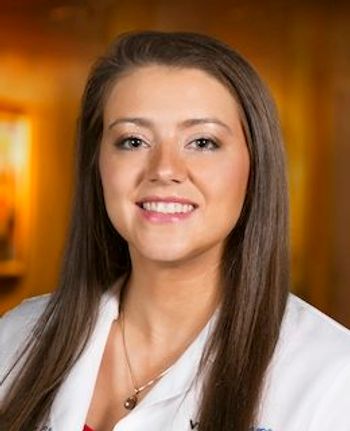
Swept-source anterior segment-OCT aids in early diagnosis of childhood glaucoma
The investigators described the CASIA2 (Tomey Corporation) instrument, which is a new AS-OCT device with a swept-source laser wavelength of 1310 nm that can scan at a speed of 50,000 A-scan/second.
A study conducted in India reported that swept-source anterior-segment
Led by Sushmita Kaushik, MS, she and her colleagues explained that while primary congenital glaucoma (PCG) is rare, it is an important cause of visual loss in children. They estimated that PCG causes 10% of childhood blindness in Africa and 3% in the US.2 She is from the Advanced Eye Centre, Postgraduate Institute of Medical Education and Research, Chandigarh, India.
Children with PCG often present with a congenital cloudy cornea, buphthalmos, and photophobia or lacrimation, and corneal edema can mask elevated intraocular pressure. A cloudy cornea may prevent accurate evaluation of the optic disc. However, the findings may not point to glaucoma because the congenital corneal opacities also can result from infections and metabolic or genetic disorders without glaucoma.3
Diagnosing these patients correctly usually requires sedation or general anesthesia. The definitive diagnosis of glaucoma is usually based on a detailed examination conducted under sedation or general anesthesia.4
The investigators described the CASIA2 (Tomey Corporation) instrument, which is a new AS-OCT device with a swept-source laser wavelength of 1310 nm that can scan at a speed of 50,000 A-scan/second. The enhanced speed of image acquisition enables 16 sections to be acquired within 5 seconds, which are analyzed to form a 3-dimensional image of the anterior chamber.5 The greater objectivity of the SS AS-OCT stems from the ability for automated recognition of the scleral spur and measurement of 360° anterior chamber parameters.6,7
Evaluating the technology
In this prospective, comparative study, Kaushik and colleagues assessed SS AS-OCT for differentiating early-onset childhood glaucoma from other conditions in pediatric patients. The study included patients younger than 2 years who had been referred to a tertiary care research and referral center in Northern India. The diagnosis of early-onset childhood glaucoma was based on the clinical appearance of corneal clarity, intraocular pressure, buphthalmos, and optic disc evaluation.
The main outcomes were the ability to visualize the trabecular meshwork (TM) structures, the angle opening distance (500 or 250 mm), and the angle recess area (250 or 500 mm2) using SS AS-OCT with the “flying baby” technique.
“The flying baby technique is an innovative imaging method designed for examining the eyes of infants that allows examiners to safely hold infants while capturing SS AS-OCT images. Initially developed for retinal imaging,8-10 the technique recently has been expanded to include anterior-segment imaging as well,11” they explained.
The investigators included 23 pediatric patients (mean age, 17.3 months) without glaucoma and 30 pediatric patients (mean age, 18.6 months) who had been diagnosed with early-onset childhood glaucoma.
“The TM shadow was clearly visible in 23 patients without glaucomatous eyes (100%), whereas the TM shadow was clearly visible in only 8 patients with glaucomatous eyes (26.7%) (sensitivity, 73.3%; specificity, 100%),” the authors reported.
They also said that to diagnose pediatric patients as not having early-onset childhood glaucoma, the highest area under the receiver operating characteristic curve of 0.87 (95% confidence interval, 0.77-0.97; P <.001) was used for a clearly visible TM structure. The patients with glaucoma had greater anterior chamber angle measurement values compared with those without glaucoma. The TM structure was visualized in all young children with corneal opacity but without glaucoma, and all 23 patients were correctly diagnosed as not having glaucoma using SS AS-OCT.
The investigators concluded, “The noninvasive imaging tool, SS AS-OCT, can be used to assess the anterior chamber angles in children. The findings suggest that the use of SS AS-OCT offers the potential for distinguishing early-onset childhood glaucoma from other conditions. No visibility of the TM structure was the most specific sign for glaucomatous eyes in this relatively small cohort.”
References
- Kaushik S, Singh AK, Thattaruthody F, et al. Utility of swept-source anterior-segment OCT as an in-office biomarker for early childhood glaucoma. JAMA Ophthalmol. 2025;published online May 22. doi:10.1001/jamaophthalmol.2025.1009
- Kong L, Fry M, Al-Samarraie M, Gilbert C, Steinkuller PG. An update on progress and the changing epidemiology of causes of childhood blindness worldwide. J AAPOS. 2012;16:501-507. doi:
10.1016/j.jaapos.2012.09.004 - Krachmer JH, Mannis MJ, Holland EJ. Congenital corneal opacities: diagnosis and management. In: Cornea: Fundamentals, Diagnosis and Management: 3rd ed. New York: Mosby Elsevier; 2011:239-265.
- Bradfield Y, Barbosa T, Blodi B, et al. Comparative intraoperative anterior segment OCT findings in pediatric patients with and without glaucoma. Ophthalmol Glaucoma. 2019;2:232-239. doi:
10.1016/j.ogla.2019.04.006 - Fukuda S, Kawana K, Yasuno Y, Oshika T. Anterior ocular biometry using 3-dimensional optical coherence tomography. Ophthalmology. 2009;116:882-889. doi:
10.1016/j.ophtha.2008.12.022 - Nakamura T, Isogai N, Kojima T, Yoshida Y, Sugiyama Y. Implantable collamer lens sizing method based on swept-source anterior segment optical coherence tomography. Am J Ophthalmol. 2018;187:99-107. doi:
10.1016/j.ajo.2017.12.015 - Liu P, Higashita R, Guo PY, et al. Reproducibility of deep learning based scleral spur localisation and anterior chamber angle measurements from anterior segment optical coherence tomography images. Br J Ophthalmol. 2023;107:802-808. doi:
10.1136/bjophthalmol-2021-319798 - Patel CK, Fung TH, Muqit MM, et al. Non-contact ultra-widefield imaging of retinopathy of prematurity using the Optos dual wavelength scanning laser ophthalmoscope. Eye (Lond). 2013;27:589-596. doi:
10.1038/eye.2013.45 - Lewis J, Franchina M, Lam GC. Novel techniques for wide-field retinal photography in neonates and infants. J AAPOS. 2023;27:112-114. doi:
10.1016/j.jaapos.2023.01.005 - Cehajic-Kapetanovic J, Xue K, Purohit R, Patel CK. Flying baby optical coherence tomography alters the staging and management of advanced retinopathy of prematurity. Acta Ophthalmol. 2021;99:441-447. doi:
10.1111/aos.14613 - Jasim H, El-Haddad O, Amarakoon S. 3 Flying baby anterior segment OCT in the diagnosis of anterior segment dysgenesis. BMJ Open Ophthalmol. 2023; published online October 4. doi:
10.1136/bmjophth-2023-BIPOSA.3
Newsletter
Want more insights like this? Subscribe to Optometry Times and get clinical pearls and practice tips delivered straight to your inbox.


















































.png)


